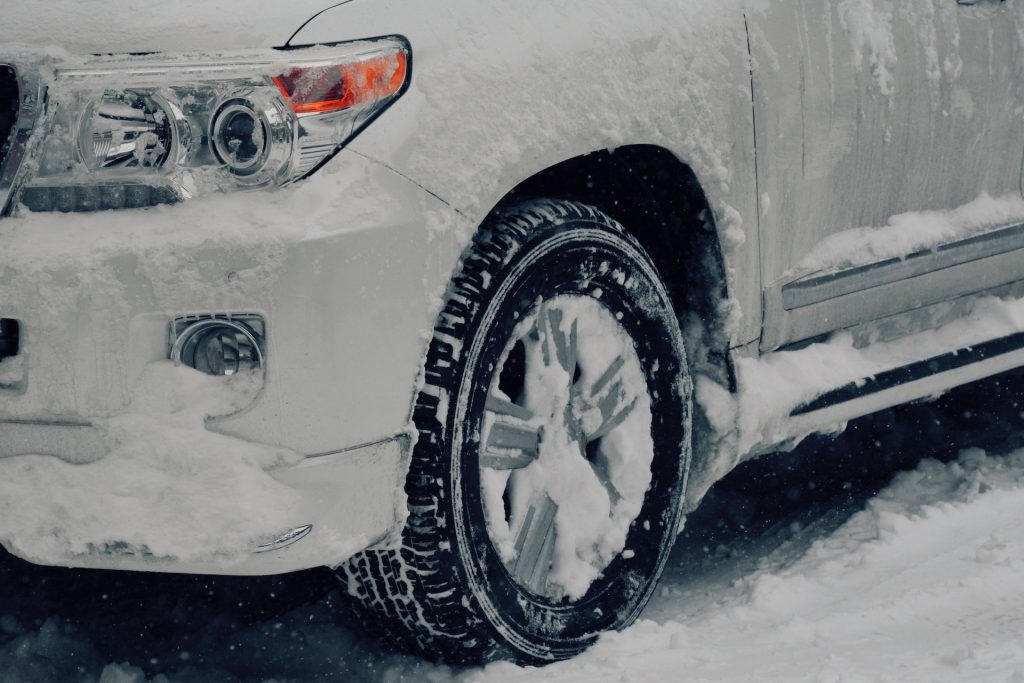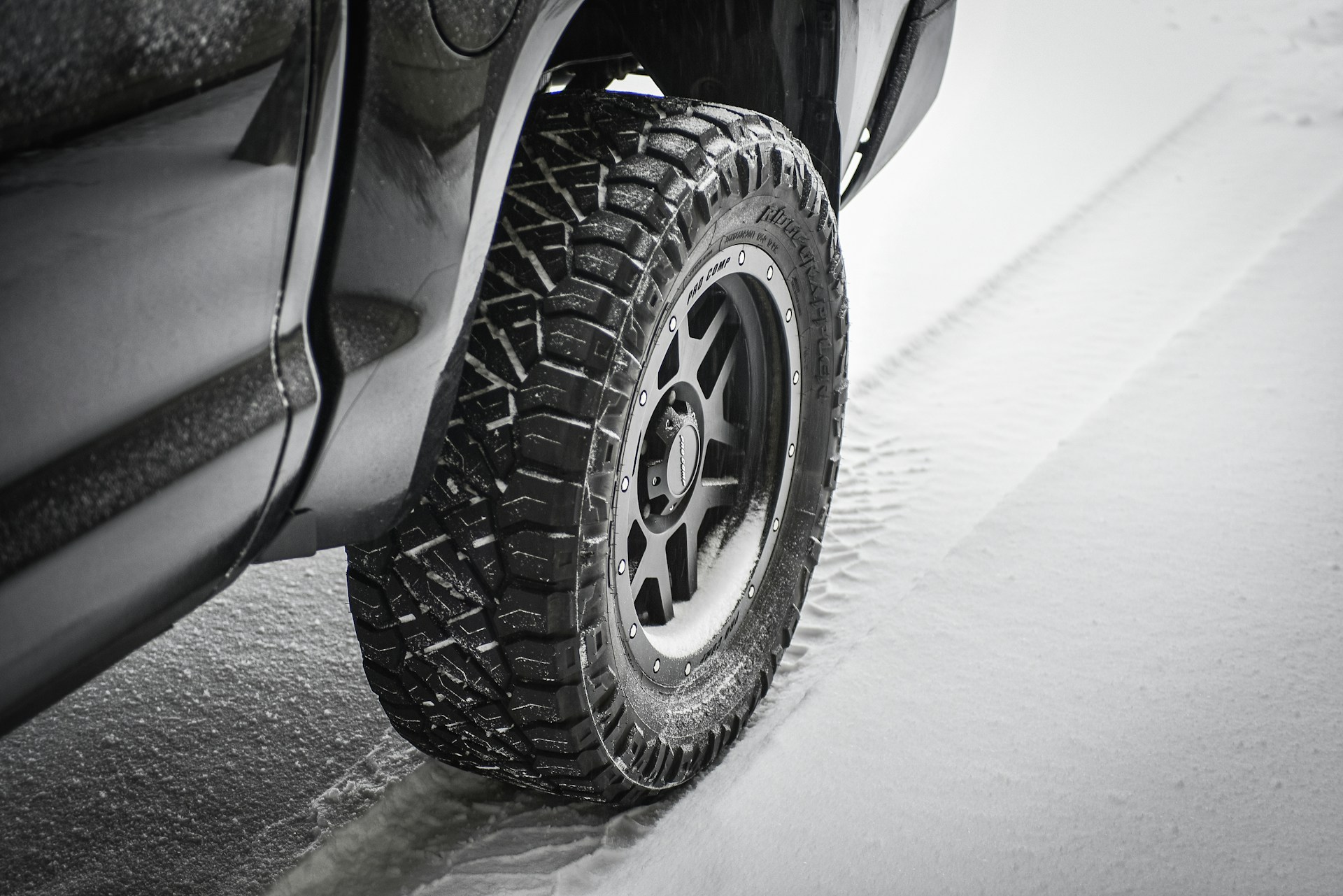Winter’s arrival transforms our streets into a dazzling yet daunting landscape, where roads become slippery pathways veiled in snow and ice. In these frosty months, the right choice of tires for your car becomes more than a simple decision crucial safeguard for your travels.
Winter tires stand as essential allies, ensuring safety on slick roads. Their specialized design and materials provide unmatched grip, offering you the confidence and control you need to navigate winter’s challenges. Join us on this journey to discover how to choose the best winter tires, turning your cold-weather journeys into safe and serene adventures.
What are Winter Tyres?
Winter tires are like the all-terrain boots of the automotive world, meticulously engineered to conquer the challenges of cold weather driving. Made from a unique rubber compound, they remain flexible even as the thermometer dips, ensuring that your car clings to the road with confidence.
Their distinctive tread design, with deep channels and extra biting edges, acts like cleats on ice and snow, offering unmatched traction. This not only makes handling your car smoother but also significantly ramps up your safety when winter’s wrath covers the roads. In essence, winter tires are your steadfast allies, offering peace of mind and steady passage through the season’s snowy trials and icy tests.
What are the Types of the Winter Tyres?

1. Studless Ice & Snow Tires
these tires are the go-to choice for snowy and icy roads. They are crafted with a rubber compound that remains pliable in cold weather, ensuring better grip. The deep treads and unique patterns on these tires are engineered to provide excellent traction by effectively gripping onto snow and ice, offering enhanced safety and stability without the need for metal studs.
2. Studded Tires
Equipped with metal studs embedded in the tread, these tires offer an extra level of traction, particularly on hard-packed snow and ice. They are especially useful in areas with severe and consistent winter conditions. The studs dig into icy surfaces, providing superior grip. However, it’s important to note that studded tires are subject to restrictions in some regions due to their potential to damage road surfaces.
3. Performance Winter/Snow Tires
These are designed for drivers of high-performance vehicles who don’t want to sacrifice handling during the winter months. While they provide better traction in snowy and icy conditions than regular all-season tires, they have a less aggressive tread pattern compared to standard winter tires. Their softer rubber compound helps maintain a good road grip. Performance winter tires are a great option for those seeking a balance between high-speed stability and winter weather safety.
What to Look for Before Purchasing the Winter Tyre?

1. Tire Type Matters
When it comes to winter tires, the type you choose can significantly impact your driving experience in snowy conditions. Studless Ice and snow Tires are great for general winter driving, offering reliable traction without damaging road surfaces. Studded Tires come with metal studs that dig into the ice, providing exceptional grip, but they can be harsh on roads and are regulated in some areas. Performance Winter Tires are tailored for high-performance vehicles, maintaining better handling at higher speeds, ideal for drivers who don’t want to compromise on performance during winter.
2. Rubber Compound is Key
The rubber compound used in winter tires is specifically designed to remain flexible at lower temperatures. This flexibility is crucial as it allows the tire to maintain better contact with the road, providing increased grip and safety. Unlike standard tires, which can harden and become less effective in cold weather, winter tires use this soft compound to navigate slick, icy roads with more stability and control.
3. Tread Depth and Pattern
The tread depth and pattern on winter tires are meticulously designed for optimal performance in snowy conditions. Deeper treads allow for better snow and slush displacement, preventing build-up and maintaining traction. The patterns are often more aggressive compared to all-season tires, featuring biting edges that grip onto ice and snow, enhancing your vehicle’s stability and safety in challenging winter conditions.
4. Tyre Size and Fit
The wrong size can affect the vehicle’s handling, braking, and stability. Accurate tire sizing ensures that the speedometer readings remain correct and the overall vehicle dynamics are not adversely affected. Always refer to your vehicle’s manual or consult with a tire expert to select the right size for optimum performance and safety.
5. Speed Rating
Winter tires often have a lower speed rating compared to all-season or summer tires. It’s important to understand that while these tires provide superior traction in winter conditions, they might not be suited for higher speeds. Selecting a tire with an appropriate speed rating is important to maintain your vehicle’s performance capabilities safely.
6. Recognize Wear Indicators
Winter tires come with wear indicators that are crucial for determining when it’s time to replace them. These indicators are small raised bars within the tire grooves. When the tire’s tread wears down to the level of these bars, it indicates that the tread depth is no longer adequate for safe winter driving, signaling the need for tire replacement.
7. Check for Severe Weather Ratings
The Three-Peak Mountain Snowflake symbol is an important indicator to look for. This symbol means that the tire has been tested and meets specific criteria for snow traction and performance in severe winter conditions. Tires bearing this symbol are certified to offer superior performance in heavy snow, assuring you in extreme weather.
8. Don’t Mix Tires
Using a mix of tire types can lead to uneven vehicle handling and can be hazardous, especially in winter conditions. It’s essential to equip your vehicle with four matching winter tires to ensure balanced traction, handling, and safety. This uniformity helps in maintaining the stability of your vehicle on snowy or icy roads.
9. Local Regulations and Recommendations
Being aware of and adhering to local winter tire regulations is crucial. Some regions have specific laws mandating the use of winter tires during certain months or under particular weather conditions. These laws are in place to ensure road safety and reduce winter driving accidents, making it essential to follow them.
10. Invest in Quality
While it might be tempting to save money on cheaper options, investing in high-quality winter tires is crucial for long-term safety and performance. Higher-quality tires usually offer better traction, durability, and overall performance in winter conditions. This investment not only ensures safety but can also be more economical in the long run due to their longer lifespan and better performance.
Tips to Purchase Winter Tyres Wisely

1. Assess Climate and Weather Patterns
Evaluate the typical climate and weather patterns in your region. If you live in an area with harsh, long winters, prioritize tires with superior ice and deep snow performance. In contrast, for milder winters with occasional snow, a tire with good performance in wet and slushy conditions may be more suitable.
2. Examine Warranty and Guarantees
Investigate the warranty and guarantees offered with the tires. A good warranty can provide peace of mind and protection against defects. Some manufacturers also offer satisfaction guarantees, allowing you to return the tires if they don’t meet your expectations.
3. Consider Tire Age
Check the manufacturing date of the tires. Tires degrade over time, even if unused. Look for the DOT code on the tire sidewall to ensure you are buying the newest tires possible. This code includes a four-digit number indicating the week and year of manufacture.
4. Understand the Significance of the Snowflake Symbol
Look for the Three-Peak Mountain Snowflake (3PMSF) symbol. This symbol indicates that the tire has been tested and meets specific snow traction performance requirements, making it a reliable choice for severe winter conditions.
5. Plan for Storage
Consider where you will store your off-season tires. Proper storage is crucial to maintain tire condition. Store them in a cool, dry place away from direct sunlight and heat sources to prevent premature aging.
6. Evaluate Studded vs. Studless Options
Decide between studded and studless winter tires based on your typical driving conditions and local regulations. Studded tires offer superior traction on ice but can be noisy and are not allowed everywhere. Studless tires provide excellent performance in most winter conditions and are more versatile.
7. Installation and Balancing
Ensure professional installation and balancing of your winter tires. Proper installation is key to maximizing tire performance and lifespan. Improperly installed or balanced tires can lead to uneven wear, reduced traction, and potential safety hazards.
8. Consider Purchasing a Full Set
While it might be tempting to replace only the most worn tires, purchasing a full set of four winter tires is advisable for balanced handling and stability. Mixing winter and all-season tires can lead to unpredictable vehicle behavior, especially in slippery conditions.
9. Research Brands and Models
Start by researching different tire brands and models. Look for those that have a strong reputation for winter performance. Read online reviews, testimonials, and expert opinions to understand the strengths and weaknesses of each brand and model. This initial research can guide you toward tires that are known for durability, grip, and overall performance in winter conditions.
10. Consider Your Driving Habits
Reflect on your typical winter driving conditions and habits. If you often drive in areas with heavy snowfall and icy roads, look for tires specifically designed for these conditions. On the other hand, if you encounter occasional light snow, you might opt for a less aggressive winter tire. Your choice should align with the severity of winter weather you usually face.
11. Check Tread Depth and Patterns
Pay close attention to the tread depth and patterns of the tires. Winter tires should have deeper treads and unique patterns for better traction on snow and ice. Look for tires with features like wide grooves and biting edges, as they are more effective in handling winter road conditions.
12. Tire Ratings
Learn to decipher tire ratings, including the load index and speed rating. These ratings indicate the tire’s carrying capacity and maximum speed capability. Ensure that the tires you choose meet or exceed the requirements of your vehicle and are suitable for your driving needs.
13. Size and Compatibility
Confirm the correct tire size for your vehicle. Using the wrong size can affect the car’s handling and safety. You can find the size information in your car’s manual or on the sidewall of your current tires. Also, ensure the tires are compatible with your vehicle type, whether it’s a sedan, SUV, or truck.
14. Budget Wisely
Determine a budget but be prepared to invest in quality. While it’s important to find tires that fit your budget, remember that cheaper options might not provide the same level of safety and performance. Consider winter tires a long-term investment in your safety.
15. Look for Deals and Rebates
Keep an eye out for seasonal deals, rebates, or promotions on winter tires. Many tire retailers and manufacturers offer special pricing during fall and early winter. This can be a great opportunity to purchase high-quality winter tires at a reduced cost.
16. Consult with Professionals
Don’t hesitate to seek advice from tire professionals. They can provide valuable insights into the best tires for your specific needs and can help you understand the nuances of each tire type. Their expertise can be particularly helpful if you’re unsure about the best option for your vehicle and driving conditions.
Conclusion
Choosing the right winter tires is a crucial decision for any driver facing cold, snowy, or icy conditions. By considering your specific needs and the unique challenges of your driving environment, you can select tires that will offer optimal safety and performance.
































































